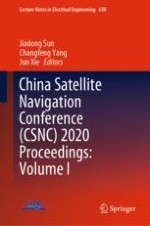2020 | OriginalPaper | Chapter
Radiosonde-Based New Spatiotemporal Modelling for the Construction of Temperature Profiles for GNSS Applications
Authors : Longjiang Li, Zhen Shen, Qimin He, Mofeng Wan, Kefei Zhang, Suqin Wu
Published in: China Satellite Navigation Conference (CSNC) 2020 Proceedings: Volume I
Publisher: Springer Singapore
Activate our intelligent search to find suitable subject content or patents.
Select sections of text to find matching patents with Artificial Intelligence. powered by
Select sections of text to find additional relevant content using AI-assisted search. powered by
